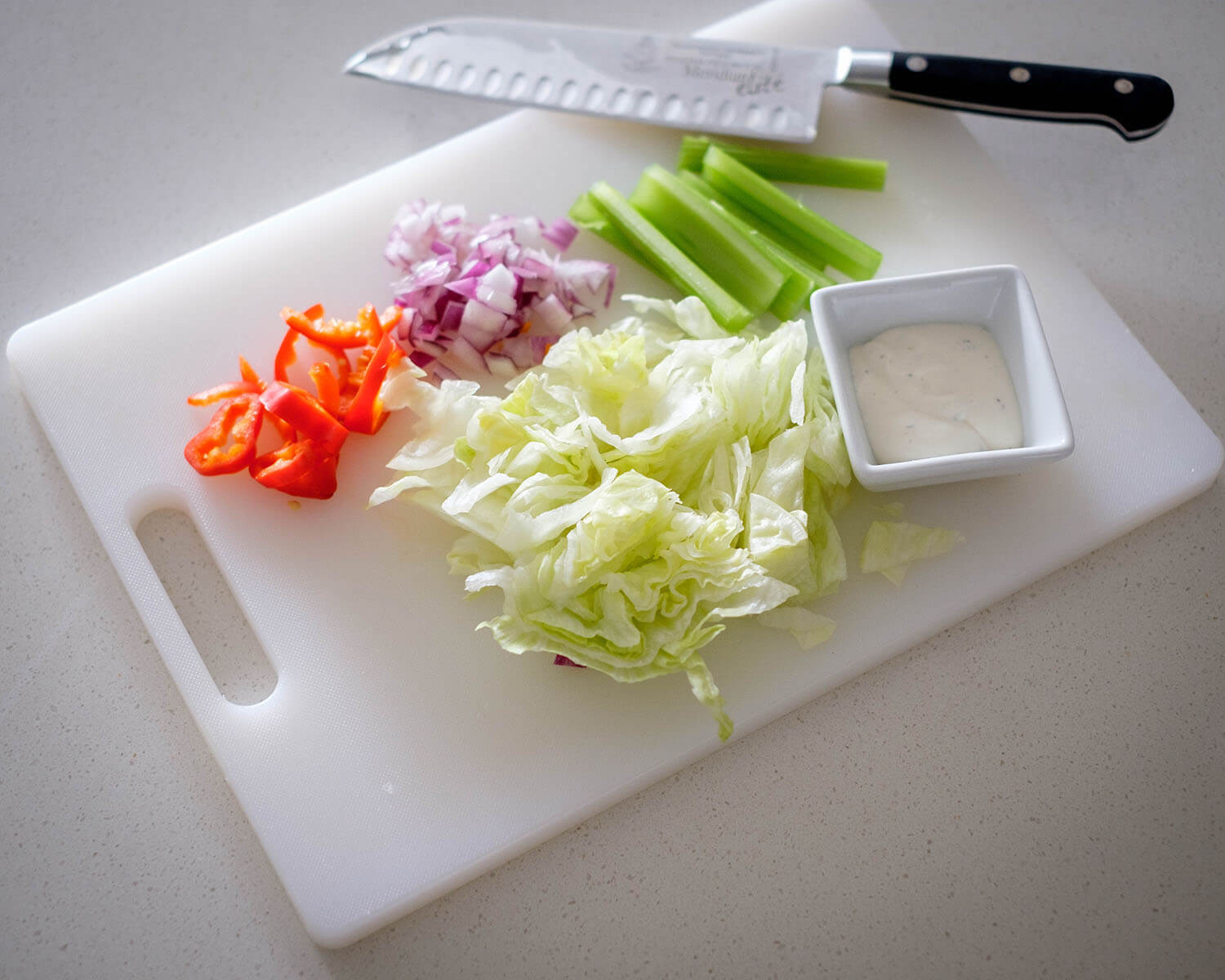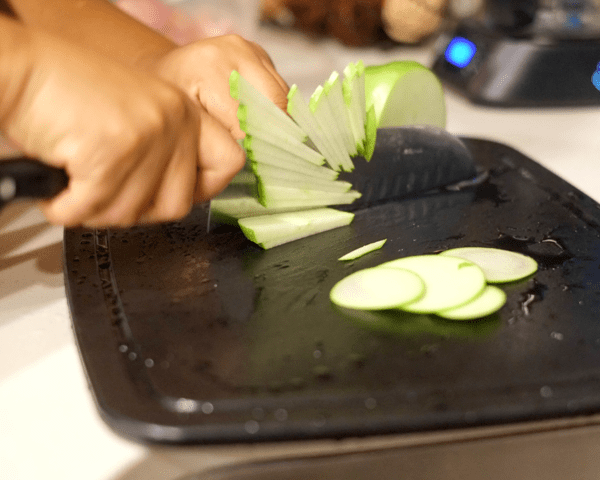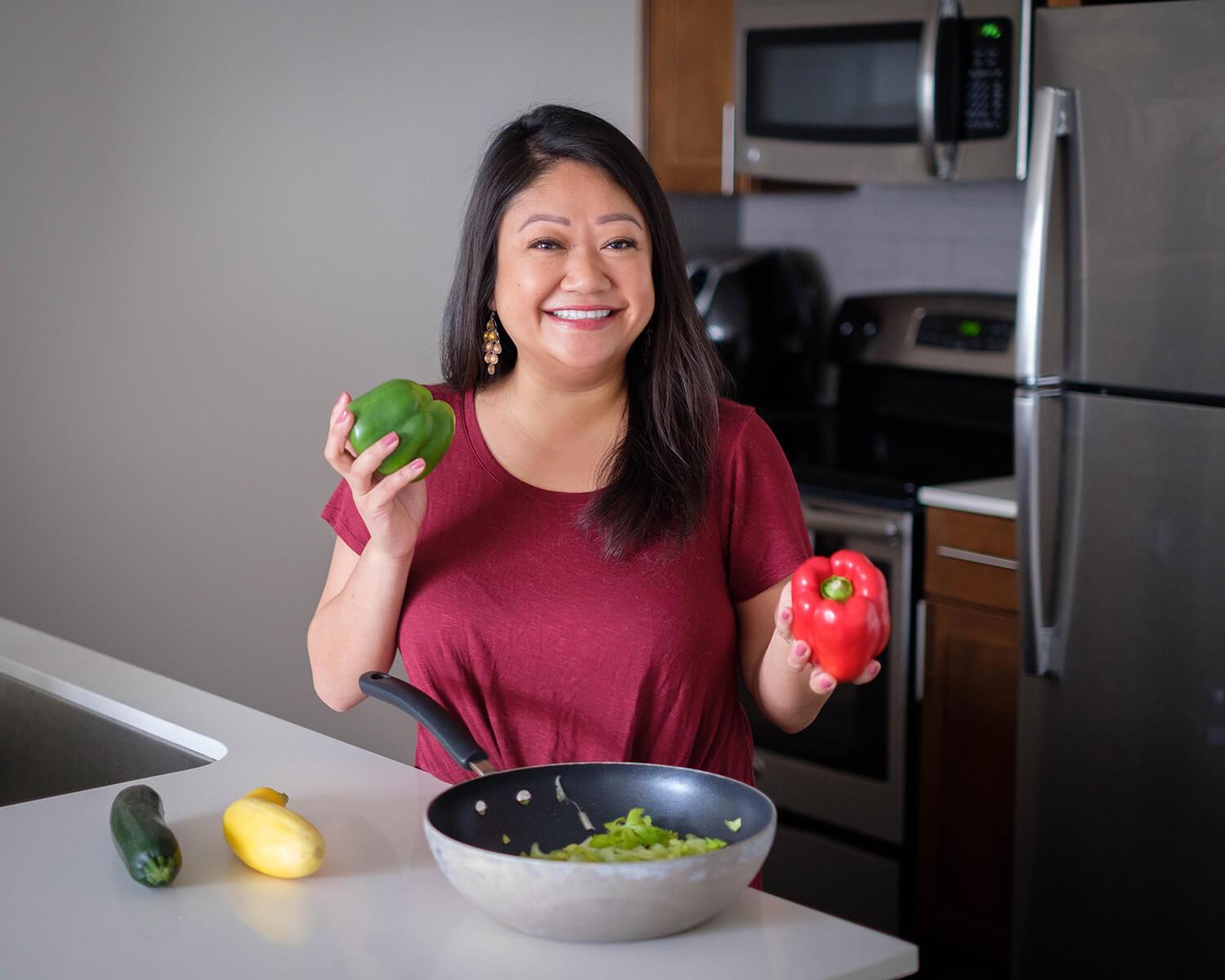
Hello my foodie friends, let’s dive into the world of slicing, dicing, and chopping and let’s master some basic knife skills. When it comes to conquering your kitchen, it all starts with safety and efficiency of basic knife skills. Here are some essential knife skills to focus on as a beginner.
Best Knives for Meal Prep
Using the right knife during meal prep is going to be a total game-changer. You’re less likely to encounter unexpected slips and cuts, making your kitchen experience much more enjoyable and accident-free.
First up, we have the Chef’s Knife which should be your go-to for all things chopping, dicing, and slicing. Think of it as the jack-of-all-trades, ready to transform those veggies into picture-perfect cubes, slice through succulent meats like a breeze, and oh-so-gracefully mince herbs into aromatic confetti. The blade is around 8 to 10 inches long which is the perfect balance between power and precision. With its sturdy blade and rocking motion, you’ll conquer the kitchen like a culinary ninja, making prep work feel like a joyous dance.
Now, let’s talk about the dashing Paring Knife. The blade is usually around 3 to 4 inches long and is all about finesse and precision. This should be saved for more of those delicate tasks. This sleek blade is all about the finer things in life—peeling apples, coring tomatoes, and tackling intricate tasks like a seasoned pro. Its smaller size and nimble maneuverability make it a true companion for those small yet crucial jobs.
But why separate the two? It’s all about efficiency and safety, my foodie friends! Using a chef’s knife for delicate peeling might be like using a sledgehammer for a thumbtack—it’s just not the right tool for the job. On the flip side, attempting to dice an onion with a paring knife could turn into a finger-tango, and that’s not the kind of moves we’re aiming for in the kitchen!
Tips for Basic Knife Skills:
Now that you know what knives to use, here are some basic knife skills.
- Hand Position and Grip: Hold the knife with a firm but not overly tight grip. Place your index finger and thumb on either side of the blade, while wrapping your other three fingers around the handle.
- The Claw Technique: Curl your fingertips under and use your knuckles as a guide to hold the ingredient you’re cutting. This helps protect your fingers while ensuring precise cuts.
- Guiding Hand: The hand holding the ingredient should guide the knife, moving it back as you cut. Your fingertips should be tucked in to prevent accidental cuts.
Basic Knife Cuts:
- Slice: Use a gentle back-and-forth motion while moving the knife forward to create thin, even slices. Examples include cutting bell peppers and red onions for sizzling fajita toppings.
- Dice: Cut the ingredient into small cubes of equal size. Start by making slices, then stack them and cut them into strips, and finally turn the strips and dice them. Dicing onions, celery, and carrots work well for soups so that they cook faster and soften really easily during the cooking process.
- Chop: Use a rocking motion to cut larger ingredients into smaller pieces. Keep the tip of the knife on the cutting board and pivot the blade up and down. You may try this method for chopping broccoli into florets for stir-fry dishes or cabbage for coleslaws.
- Mincing: For fine chopping, use a rocking motion with the tip of the knife, moving it back and forth over the ingredient. This technique is great for chopping garlic or herbs
Tips for Knife Safety
- Safe Cutting Surfaces: Always use a stable cutting board made of wood, plastic, or bamboo. Avoid glass or hard surfaces that can damage your knife’s edge. Using a wet paper towel underneath the cutting board will also help keep the cutting board from slipping around the surface.
- Knife Storage: Store knives in a knife block, magnetic strip, or knife sheaths to protect both the blade and your hands.
- Honing and Sharpening: Regularly use a honing rod to realign the edge of your knife, keeping it sharp. Sharpen your knives occasionally using a sharpening stone or a professional sharpener.
So remember, practice makes perfect, so start with the basics and soon enough you’ll be conquering that kitchen with confidence.
Try practicing your knife skills with these recipes:



